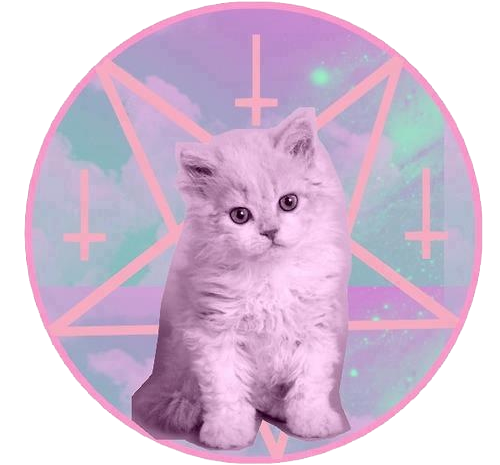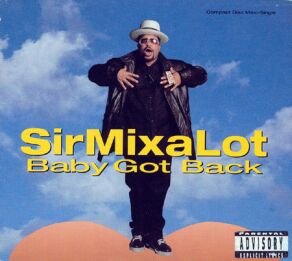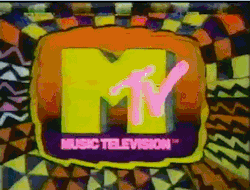Get ready for a doozy of an entry, readers. This week, I’m
going to tackle an entire genre of music: grunge (the genre part is
questionable). So let’s take a close look at the ‘90s phenomenon we all know
and (possibly) love.
Where Did Grunge Come
From?
Grunge (or the Seattle sound) emerged in--you guessed
it--Seattle in the mid-‘80s. The term was first used in 1981 by Green River
vocalist Mark Arm in a letter he wrote to Seattle zine Desperate Times. Mark was “criticizing” his first band, Mr. Epp and
the Calculations, calling them “Pure grunge! Pure noise! Pure shit!”
But Mark admitted that he had snagged the term from
Australia, and didn’t use it as the official name of the genre. It was Sub Pop
founder Bruce Pavitt who actually popularized the term by dubbing the bands on
his label as “grunge.”
Grunge as a genre was a result of Seattle’s isolated music
scene. It evolved from the punk scene, inspired by bands like The Fartz, The
U-Men and the Fastbacks. Bands outside the Pacific Northwest (Sonic Youth,
Pixies, Dinosaur Jr.) also influenced the grunge scene, along with Black Flag’s
change of pace on 1984’s My War.
How Would You
Describe Grunge?
This genre definitely has a specific sound. It’s kind of a
mix of hardcore punk, heavy metal and the general “alternative” sound.
Grunge is typically characterized by sludgy guitars, fuzz
pedals, a ton of distortion and growly, almost incomprehensible vocals. It
shares more in common with punk than anything else. The only differences
between punk and grunge are tuning and tempo. And like punk, grunge puts on
this air of not giving a fuck about melodies while still having discernable
melodies.
Most grunge songs address some form of alienation or apathy.
There isn’t much rebellion behind tunes like “Smells Like Teen Spirit” and
“Black Hole Sun.” But of course there’s some humor behind all that lethargy.
Soundgarden’s “Big Dumb Sex” satirizes hair metal (fairly accurately, too).
Jon Wiederhorn of Guitar
World once wrote, “So what exactly is grunge? Picture a supergroup made up
of Creedence Clearwater Revival, Black Sabbath and The Stooges, and you’re
pretty close.” And you know what? That’s a pretty accurate statement.
So Who’s Grunge
Again?
Some of the first bands labeled as grunge were Green River,
Soundgarden, Melvins, Malfunkshun and Skin Yard. Notice that Nirvana is nowhere
in that lineup because they came after the establishment of the genre.
At first, the term “grunge” only applied to bands from the
Seattle area, including Alice In Chains, Mudhoney, Screaming Trees, Pearl Jam
and yes, Nirvana. As the Seattle sound began to creep out of the Pacific
Northwest, similar-sounding bands (not necessarily copycats) fell under the
same label, including Babes in Toyland and Stone Temple Pilots.
People like to argue over which bands are really grunge and which bands are
“posers.” (Do people still use the term “poser,” or is that just a middle
school thing?) Though I believe it’s just plain silly to be so concerned over a
certain band’s genre, it’s my understanding that only bands that came out
during a specific time frame (and a specific area, to a certain extent) can be
classified as grunge.
As a serious ‘90s scholar (can I put that on my résumé?), I
would put the official grunge reign between 1984 and 1994. It all started with
Green River and Soundgarden, and officially ended with Kurt Cobain’s suicide in
1994.
Anything after 1994 is post-grunge, a more radio-friendly
version of its gnarly predecessor. Post-grunge bands include Bush, Collective Soul, Foo Fighters and Creed (all of which I enjoy, so sue me).
Is Grunge Dead?
Yes. Yes, it is.
Grunge as a music genre has been dead since 1994 and I will
fight anyone who disagrees with me. Though I don’t really like to make it seem
as if Kurt Cobain was the only guy in the scene who mattered, his death
definitely marked the end of an era. Sure, other Seattle bands went on to
release more albums (Pearl Jam has had a pretty lucrative career), but grunge
was done for.
So what happened?
Well, the alternative music scene of the ‘90s was exploding
with a variety of bands hitting it big. As grunge’s popularity began to wane,
it was usurped by post-grunge, Britpop and pop-punk. Everything suddenly became
more radio-friendly and much less angsty. Britpop bands brought back keyboards,
post-grunge bands asserted some masculinity and pop-punk bands picked up where
The Ramones left off. Nobody was jamming to songs like “I Hate Myself and I Want to Die” anymore.
Blur frontman Damon Albarn commented on grunge’s decline in
a 1993 interview, saying, “If punk was about getting rid of hippies, then I’m
getting rid of grunge.” And a year later, it was all over.
Another contributing factor to this genre’s demise is its
quick and ruthless commoditization. By the time Nirvana found its way into the
mainstream, Kurt’s hobo-chic style was already being sold to Generation X. When
the dress code becomes more important than the music, you’ve got a problem on
your hands.
MTV also had a hand in destroying the scene. The rise of
music videos meant the rise of exposure, and ultimately the rise of an entire
culture based on television. MTV sold a product, and that product was
alternative culture. (If you’re interested in a more in-depth analysis of MTV
in the ‘90s, take a peek at this entry.)
 |
| ☯✞ Follow for more Soft Grunge ✞☯ |
Nowadays, grunge is kind of a punch line. Even I tend to
joke about feeling “grunge” on a daily basis. And with the rise of Internet
culture and the burgeoning market of ‘90s nostalgia, we’ve strayed so far from
the original meaning behind the term. There’s even this weird subculture
lurking on Tumblr that labels itself as “soft grunge.” (Spoiler: it has nothing
in common with ‘90s grunge and it’s kind of hilarious.)
Grunge was a fad that ended at an appropriate time, as most fads
tend to do. You don’t have to like it, but you have to admit it had a huge
impact on popular culture. So don’t cry because it ended, dear readers. Smile
because it happened. And maybe cry a little because Kurt Cobain died 20 years
ago this month.
-- Sam Boyer,
reporting from the ‘90s



















